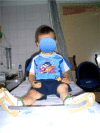Bracing in clubfoot: do we know enough?
- PMID: 31312265
- PMCID: PMC6598043
- DOI: 10.1302/1863-2548.13.190069
Bracing in clubfoot: do we know enough?
Abstract
Purpose: The Ponseti method is widely used in clubfoot treatment. Long-term follow-up shows high patient satisfaction and excellent functional outcomes. Clubfoot tendency to relapse is a problem yet to solve. Given the importance of bracing in relapse prevention, we ought to discuss current knowledge and controversies about bracing.
Methods: We describe types of braces used, with its advantages and disadvantages, suggesting bracing schedules and duration. We identify bracing problems and pinpoint strategies to promote adherence to bracing.
Results: When treating a clubfoot by the Ponseti method, the corrected foot should be held in an abducted and dorsiflexed position, in a foot abduction brace (FAB), with two shoes connected by a bar. The brace is applied after the clubfoot has been completely corrected by manipulation, serial casting and possibly Achilles tenotomy. Bracing is recommended until four to five years of age and needs to be fitted to the individual patient, based on age, associated relapse rate and timing when correction was finished. Parental non-adherence to FAB use can affect 34% to 61% of children and results in five- to 17-fold higher odds of relapse. In patients who have recurrent adherence problems, a unilateral lower leg custom-made orthosis can be considered as a salvage option. Healthcare providers must communicate with patients regarding brace wearing, set proper expectations and ensure accurate use.
Conclusion: Bracing is essential for preventing clubfoot relapse. Daily duration and length of bracing required to prevent recurrence is still unknown. Prospective randomized clinical trials may bring important data that will influence clinicians' and families' choices regarding bracing.
Level of evidence: V.
Keywords: Ponseti method; bracing; clubfoot; family adherence; relapse prevention.
Figures




References
-
- Ponseti IV, Smoley EN. Congenital club foot: the results of treatment. J Bone Joint Surg [Am] 1963;45-A:261-344.
-
- Cooper DM, Dietz FR. Treatment of idiopathic clubfoot. A thirty-year follow-up note. J Bone Joint Surg [Am] 1995;77-A:1477-1489. - PubMed
-
- Laaveg SJ, Ponseti IV. Long-term results of treatment of congenital club foot. J Bone Joint Surg [Am] 1980;62-A:23-31. - PubMed
-
- Ponseti IV. Congenital clubfoot: fundamentals of treatment. Oxford: Oxford University Press, 1996.
LinkOut - more resources
Full Text Sources
Medical
Research Materials

